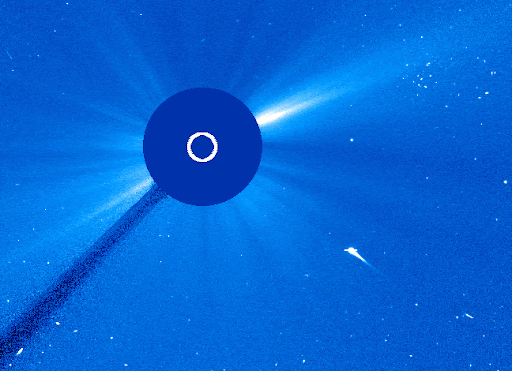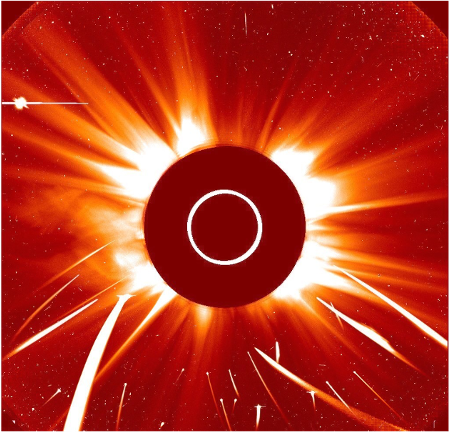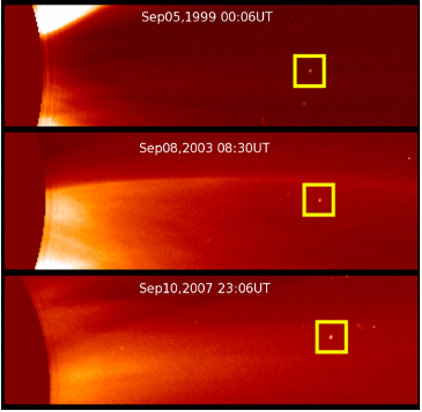The Sungrazer Project
Fact: Over half of all known comets were first discovered by Sungrazer Project contributors! These comet discoveries have shaped our modern understanding of comet orbits, composition, dust properties, evolution, and fragmentation.
Sungrazer comets also help scientists learn about the Sun. These comets - as you might guess - pass very close to the sun. They act like small solar probes as they plunge through the Sun's atmosphere.
Join the Sungrazer Project community and you might discover the next sungrazing comet!
Project task
Independent work with data
division
Heliophysics
where
Online
launched
2006
What you'll do
- Join the friendly race to be the first to find new sungrazing comets!
- Learn how to access the latest images from the ESA/NASA Solar and Heliospheric Observatory (SOHO) or NASA Solar Terrestrial Relations Observatory (STEREO) spacecraft missions and look for moving objects.
- Join a research effort largely driven by amateurs.
Requirements
- Time to get started: Hours to days. Hunting for SOHO comets requires a lot of patience, is very competitive, and requires learning new skills and systems.
- Equipment:
- Laptop or desktop computer (project is not well suited to tablets or smartphones)
- Strong internet connection
- Knowledge: No prior knowledge is required. A Guide and Comet Hunting Tutorial are provided.
Get started!
- Visit the project website.
- Click “Get Started” to access the project overview page with frequently asked questions and introductory videos.
- Follow the Guide and Comet Hunting Tutorial Guide and Comet Hunting Tutorial.
Learn More
If you’re new to sungrazing comets, check out the Official Guide to SOHO Comet Hunting.

































